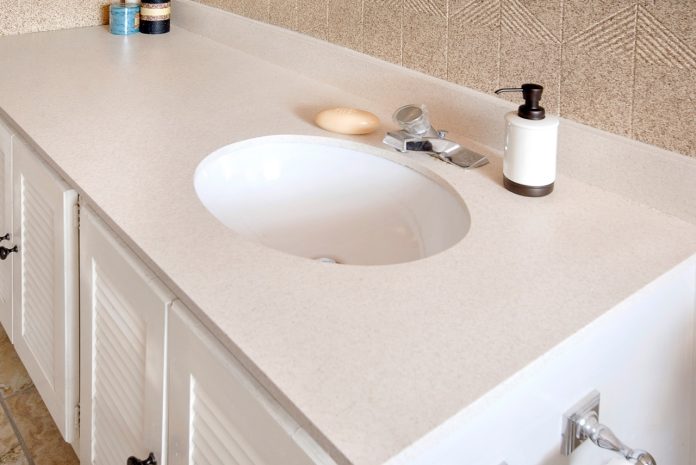When selecting a sink for your bathroom, you may encounter various composite materials, each offering unique advantages and considerations. Cultured marble sinks stand out among these options due to their durability, aesthetic versatility, and ease of maintenance. Here’s a comparison of cultured marble sinks with other popular composite materials to help you make an informed choice for your bathroom.
Cultured Marble Sinks
1. Material Composition
- Natural Stone Aggregates: Made from crushed limestone or marble dust combined with polyester resins.
- Customizable: Available in a variety of colors and patterns, including marble-like veining, offering a luxurious appearance.
2. Durability
- Resilient Surface: Resistant to chips, scratches, and stains, maintaining its appearance with minimal maintenance.
- Longevity: Can last for many years with proper care, making it a durable investment for your bathroom.
3. Maintenance
- Easy to Clean: Non-porous surface prevents stains and bacterial growth, requiring simple cleaning with mild soap and water.
- Repairable: Scratches and minor chips can be repaired using specialized repair kits, restoring the sink’s appearance effectively.
4. Aesthetic Versatility
- Color Options: Available in a wide range of colors and finishes, including glossy and matte surfaces, to suit various design preferences.
- Marble-Like Patterns: Mimics the look of natural marble without the maintenance demands, offering aesthetic appeal at a lower cost.
Other Composite Materials
1. Quartz Composite
- Material Composition: Made from crushed quartz stone mixed with resin binders.
- Strength: Highly durable and resistant to scratches, stains, and heat, suitable for high-traffic bathrooms.
- Variety: Available in various colors and finishes, with consistent patterns throughout the material.
2. Solid Surface
- Material Composition: Synthetic material composed of mineral fillers and acrylic or polyester resins.
- Seamless Integration: Allows for seamless integration of sinks and countertops, providing a smooth and hygienic surface.
- Repairable: Scratches and minor damages can often be sanded out, maintaining the material’s appearance.
3. Engineered Stone
- Material Composition: Made from crushed stone such as quartz or granite mixed with resin.
- Durable: Resistant to scratches, stains, and heat, offering a luxurious appearance similar to natural stone.
- Variety: Available in a wide range of colors and patterns, with options that mimic the look of natural stone.
4. Porcelain Enamel
- Material Composition: Steel or cast iron coated with porcelain enamel.
- Classic Appearance: Known for its glossy, smooth surface and traditional appeal.
- Durable: Resistant to scratches, chips, and stains, with a long lifespan when properly maintained.
Comparison Factors
1. Durability
- Cultured Marble: Resistant to chips and scratches, durable with proper care.
- Other Composites: Each material offers durability but may vary in resistance to specific types of damage.
2. Aesthetic Options
- Cultured Marble: Offers versatility in colors and patterns, including marble-like designs.
- Other Composites: Provide a range of colors and finishes, tailored to different design preferences.
3. Maintenance Requirements
- Cultured Marble: Easy to clean with mild soap and water, requires occasional polishing.
- Other Composites: Maintenance varies; some require regular sealing or specific cleaning agents.
4. Cost
- Cultured Marble: Generally more affordable than natural stone options like granite or marble.
- Other Composites: Cost can vary depending on the material and brand, with solid surface and quartz typically falling into a higher price range.
Conclusion
Choosing between cultured marble sinks and other composite materials depends on your priorities for durability, maintenance ease, aesthetic preferences, and budget. Cultured marble stands out for its blend of affordability, aesthetic versatility, and durability, making it a popular choice for homeowners looking to enhance their bathroom with a stylish and practical sink solution. Consider these factors to select the composite material that best suits your bathroom renovation needs.







